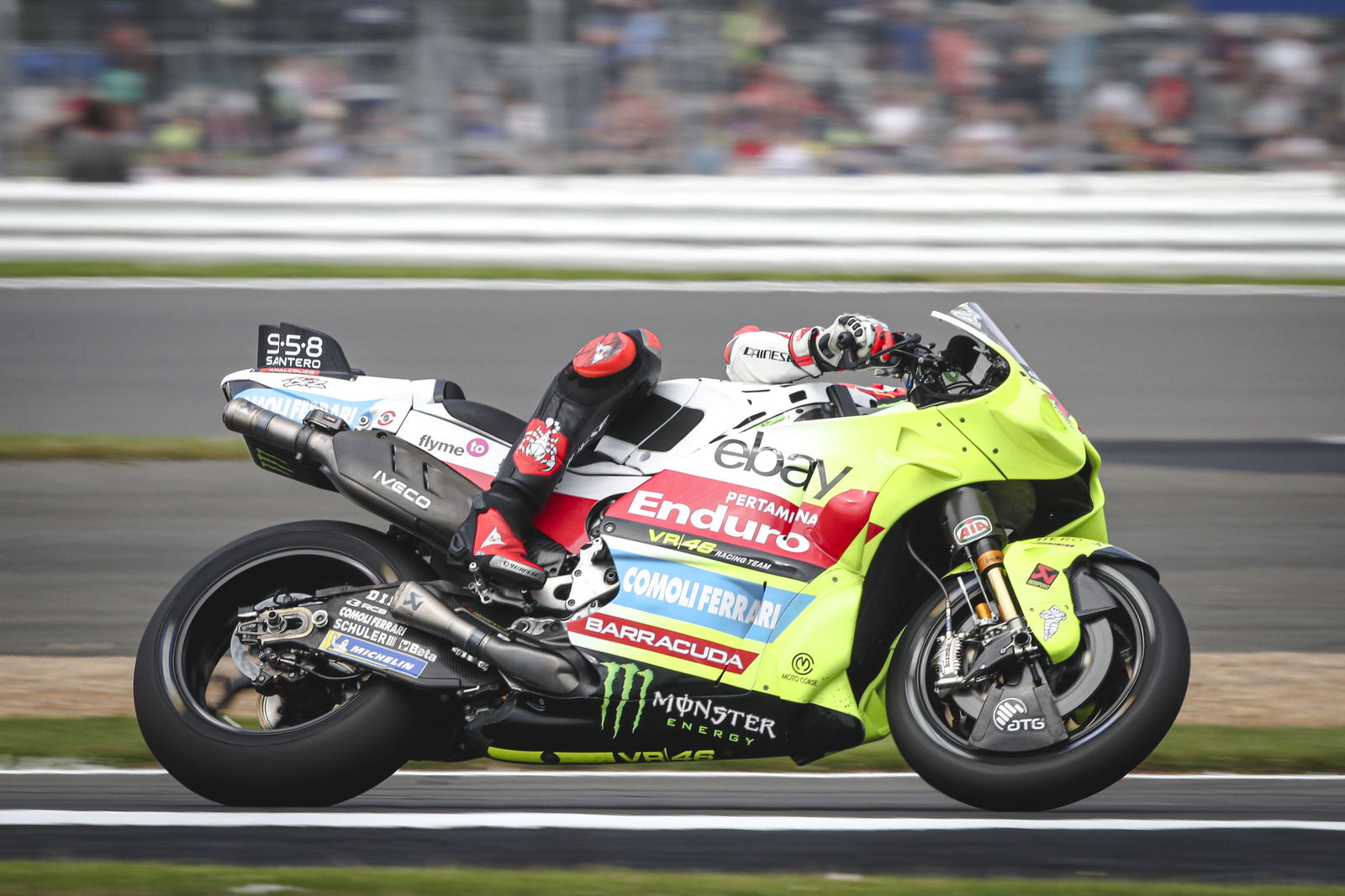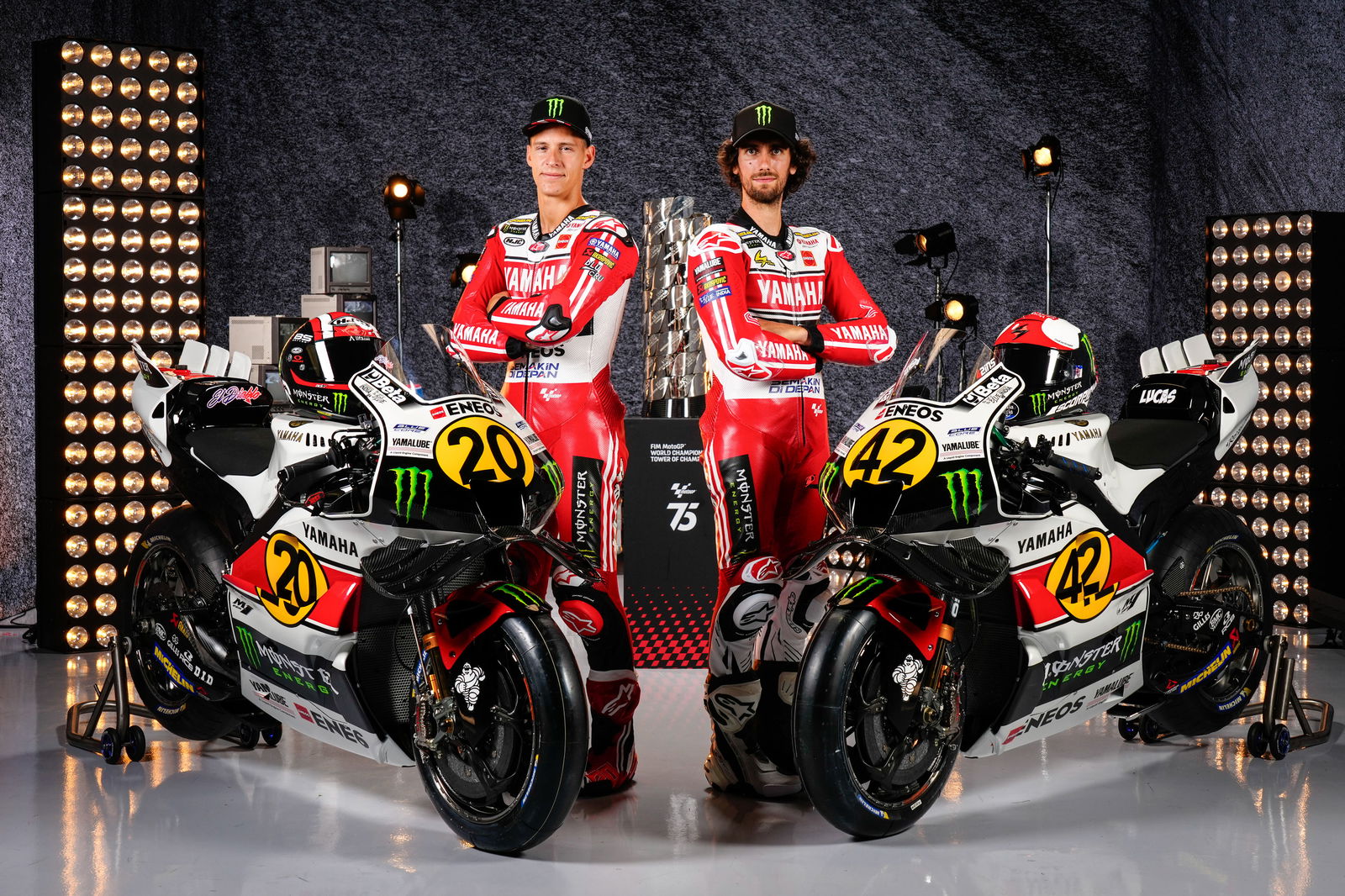Luca Marini identifies the key area Honda is losing to its MotoGP rivals
Repsol Honda’s Luca Marini has enjoyed a seemingly significant amount of progression in recent races, but Honda remains off the MotoGP pace

Luca Marini ended day one of the British MotoGP at Silverstone in 19th place, but also as the second-best Honda rider, indicating improvements from the #10 camp.
Marini, who struggled to finish within 40 seconds of the race winner for much of the first half of the season, appeared to make progress at the Sachsenring, where he scored his first point as an HRC rider thanks to a 15th place in the German Grand Prix.
At Silverstone, the anomaly of Sachsenring appeared to begin to turn into a trend on Friday, as he finished as the second-best Honda, 0.6 seconds ahead of his Repsol Honda teammate, 2020 MotoGP World Champion Joan Mir.
The improvements, Marini said, are not down to one thing in particular, but to a combination of his increasingly complete adaptation to the RC213V and some improvements in the bike itself.
“For sure, it’s not only one thing, it’s a compromise," he said to media including Crash.net at Silverstone.
"I made a huge step with my riding style, I tried to adapt a lot to what the Honda requires to be fast, because it’s really difficult when you come from another manufacturer — at the beginning, when you [ride] just with your instinct, you just make the same thing as the year before [with the previous manufacturer], but maybe it’s not the best to perform with [the new] bike.
“Now, I’ve reached a very good level on this, and I can use the bike in its strongest points, try to avoid the weakness.
“But also the bike has changed a lot. With the setting we made a big improvement, now the bike is more- not easy to ride, I would say, it’s more that I can enjoy when I ride, and when I want to be fast, for me, it’s easier now, because the concept of a bike that I have in my mind when I want to ride is now closer to [the Honda].
“Also, all the updates that Honda brings to us have been made to perform better. It’s still not enough, but these three things (Marini’s adaptation of his riding style to suit the Honda, the refinement of the setup he runs, and the upgrades brought by HRC to the RC213V) together brings better performance.”
Marini pinpoints crucial weakness
The best-placed Honda on Friday at Silverstone was Johann Zarco in 17th place, 1.498 seconds slower than Jorge Martin, who was fastest overall on his 2024 Ducati. Clearly the Honda is still at a deficit to the other bikes on the MotoGP grid, and Marini said that the area the bike struggles compared to the others is in mid-corner turning.
“The biggest thing that we can compare [between the Honda and the other manufacturers] is the turning inside the corners. Especially the factory Ducati bikes are carrying much more speed inside the corners, and also Aprilia, especially the factory Aprilia bikes — the corner speed of that bike is incredible.
“We are not able to do this, so we have to brake a little bit earlier, we have to keep the front brake for much longer, and slow down in the middle of the corner to make the bike turn. This is the biggest issue at the moment, but it’s something that we cannot solve with the riding style — we can try to make it a little bit better, but still not enough. We have to work on the parts of the bike and try to bring new updates.”
Marini’s assessment of the mid-corner abilities of the Honda compared to its rivals was echoed by LCR Honda’s Takaaki Nakagami, who said the weak point of the bike “is rear grip, and also entry phases it’s really difficult to understand this bike because it’s really difficult to stay on the racing line and we have to slow down a lot [to make the bike turn].
“From entry, as soon as you roll off and start slowing down, somehow this bike couldn’t follow the racing line — the bike is always pushing. It’s so easy to lose the racing line, [because] it’s always pushing you out, then I can’t get off the brake to make it turn, so everything is lose, lose, lose.
“Really, from entry side, we are struggling a lot.”
One of the changes Marini has made from last year to this, in switching from Ducati to Honda, has been moving from an electronic throttle to a cable throttle.
Marini said this is not about performance, rather about feel and familiarity.
“The feeling is - you want to have the cable because it’s a feeling that you always had since the pocket bikes.”
Marini said the throttle helps “to be more precise in the first touch of the gas, in change of direction. It’s easy to make a mistake when it’s the electronic throttle because a minimal movement of the hand makes an acceleration. Also, over the bumps, it changes a lot.
“Maybe also on partial throttle when you have to manage the rear grip, you have a little bit more connection with the rear tyre, and you see the shape in the data a little bit more nice, because it’s more under control.”
However, the cable throttle “doesn’t make any advantage (versus an electronic throttle), unfortunately,” Marini resignedly confessed.


